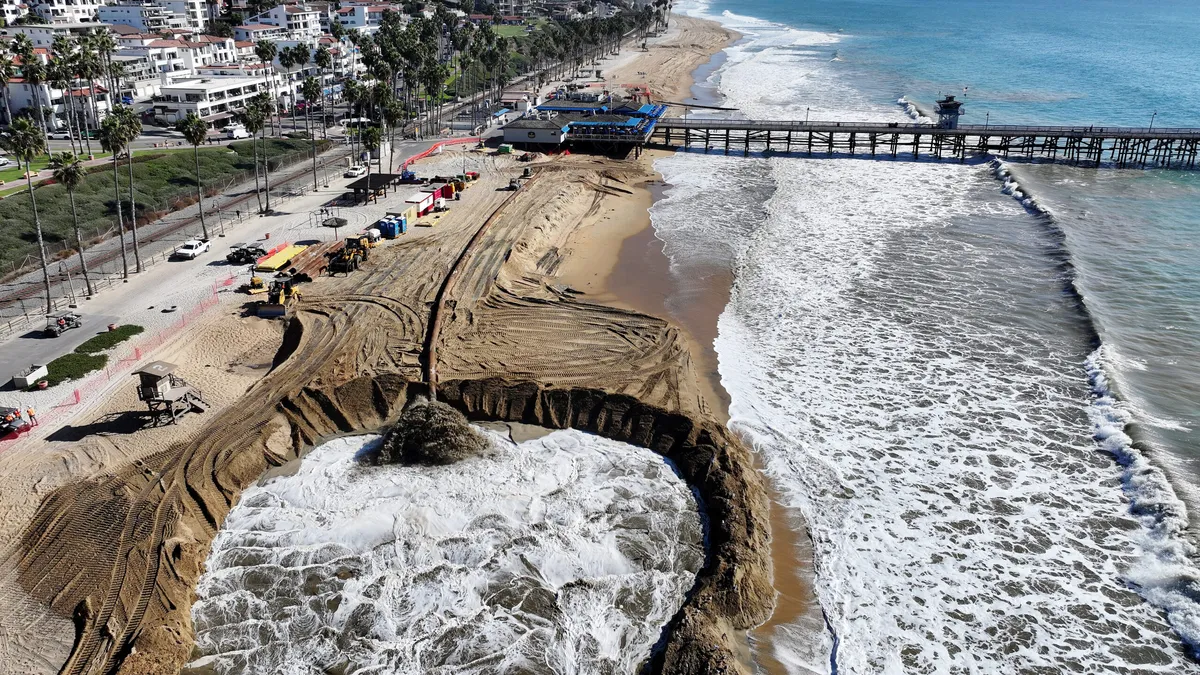
Recent research highlights alarming projections regarding sea levels, indicating that certain regions may experience a rise of 8 to 12 inches per decade within the lifetime of today's youngest generations. This rapid increase threatens the ability of many coastal communities to adapt effectively, according to a new study published by an international team of experts in polar ice and sea level science.
The study suggests that the existing target of limiting global warming to 2.7° Fahrenheit (1.5° Celsius) above pre-industrial levels, as established by the Paris Climate Agreement, may not be stringent enough to prevent catastrophic loss of Earth's polar ice sheets. Chris Stokes, a geographer and glacier expert from Durham University and a co-author of the research, argues for a more ambitious long-term target closer to 1.8° Fahrenheit. “The evidence is building towards that,” he stated, referencing recent high-profile studies advocating for stricter climate goals.
Stokes emphasized that the risks associated with exceeding 1° Celsius of warming have been documented in climate research dating back to before the first Intergovernmental Panel on Climate Change (IPCC) report in 1990. “We really don’t want to exceed 350 parts per million (ppm) of carbon dioxide,” he noted, echoing concerns about the potential consequences of increased warming.
As Earth's average temperature has consistently exceeded the 1.5° C threshold established by the Paris Agreement for nearly two consecutive years, calls for a revision of climate targets have intensified. Current atmospheric carbon dioxide levels have reached 430 ppm, marking a 50% increase since pre-industrial times. Stokes reiterated the importance of evaluating what must be done to revert to a safer climate range, even if current goals are missed.
The new study explores how melting polar ice contributes to sea level rise. It combines evidence from past warm periods, current ice loss measurements, and future projections of ice melting. Co-author Andrea Dutton, a geoscientist at the University of Wisconsin-Madison, warned that a sea level rise of several inches per decade could overwhelm adaptation efforts in many U.S. coastal communities. “They are preparing for the amount of sea level rise that has already occurred,” Dutton explained, highlighting a disconnect between current preparations and future realities.
Historically, during the mid-Pliocene warm period over three million years ago, atmospheric carbon dioxide levels were similar to today's, leading to a global sea level rise of 35 to 70 feet over thousands of years. However, the current pace of warming is unprecedented. The rapid changes observed in the Arctic raise significant concerns about how ice sheets will respond to such swift temperature increases.
Dutton also underscored the potential impacts of federal funding cuts on the U.S.’s ability to prepare for sea level rise. Reductions in science research funding, the withdrawal of promised community support from the Inflation Reduction Act of 2022, and the abandonment of the National Climate Assessment endanger efforts to project future sea level changes. “The ice sheets won’t care what different political parties believe about climate change,” Dutton stated, emphasizing the urgency of addressing rising temperatures.
According to co-author Jonathan Bamber, a physicist at the University of Bristol, the mass of ice lost from polar ice sheets has quadrupled since the 1990s, currently amounting to about 370 billion metric tons annually. “We discovered that the ice sheets are responding with large amplitude and rather rapidly,” he noted, highlighting that actual melting is far greater than previous climate models predicted.
Some of the most vulnerable areas are distant from melting ice sheets, such as Belize City, which could see significant land loss with just 3 feet of sea level rise. In low-lying tropical regions, sea levels are rising three times faster than the global average due to the thermal expansion of water and diminishing gravitational pull from melting ice sheets. Bamber warned that regions like Bangladesh, India, and the Nile Delta are particularly at risk.
Ambassador Carlos Fuller, a long-time climate negotiator for Belize, emphasized the need for global policymakers to recognize the implications of a 1.5° C temperature increase. “We must remain within the Paris Agreement limit to protect our coastal cities,” he urged. Meanwhile, Stokes pointed out that parts of Earth’s system are nearing irreversible tipping points, including freshwater systems and ocean acidification. “We may have even crossed them, and we do know that we will hit them if we keep warming,” he cautioned.